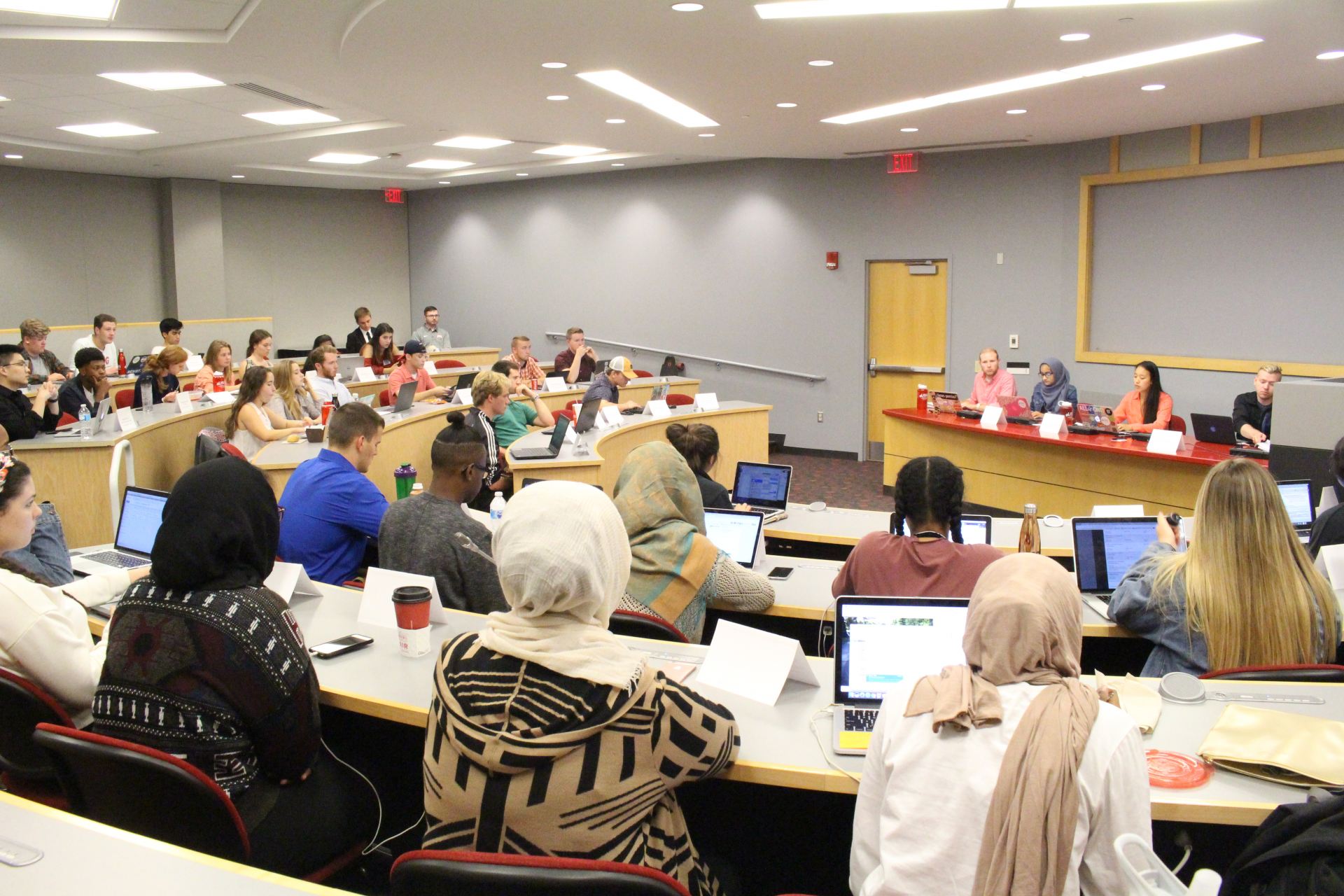It’s been a slow start for Ohio State’s Undergraduate Student Government General Assembly; the group has produced fewer resolutions in 10 sessions than that of the two previous years.
The current assembly (USG’s 50th) has introduced 10 resolutions thus far, whereas the 49th introduced 17 resolutions in its first eight sessions in Autumn 2016. At this time in Autumn 2015, the 48th assembly introduced 14 resolutions.
General Assembly senators are elected by Ohio State students to directly voice their wants and needs. The assembly specifically comes up with resolutions to university rules and protocol, and suggests changes to administration.
USG is essentially the sole entity comprised only of students that can be heard directly by administration consistently, through meetings with university leaders and Ohio State personnel.
Tony Buss, a fifth-year in English and senior adviser to USG Vice President Sophie Chang, explained the disparity in two parts: an inexperienced group of senators and an unusually productive 49th assembly during the 2016-2017 academic year.
“I think partially it’s been the learning curve of a bunch of new senators learning what [General Assembly] is,” Buss said. “It’s just a new body completely; they’re learning how everything works and how to be senators.”
General Assembly is comprised of 43 senators, who are chosen through elections, and six committee directors who are appointed by senior staff — nine students who work directly with the vice president and president on various executive matters.
Senators represent different sections of Ohio State and directors oversee the six issue committees within USG.
There are four senator vacancies and only one — the senator that represents the College of Nursing — out of the 39 senators has previous experience in General Assembly.
Buss, a fourth-year USG member who had been in the previous two assemblies as the director of diversity and inclusion, said the senators are still learning about general assemblies and USG in general.
Comparatively, the majority of the 49th assembly had previous assembly experience, which could be the cause for its productivity.
“It was a very prolific year for USG,” Buss said. “That was the most resolutions ever in USG [general assembly] history.”
Chang, a fourth-year in environment, economy, development and sustainability, oversees the sessions as the speaker of the General Assembly.
She said she is trying to create more ways to teach the senators how to use general assembly for policy-making.
“We have a lot of new members this year, and we’re still trying to foster a positive experience within the chamber,” Chang said. “We’re working on teaching them how to write effective legislation.”
During its ninth and 10th sessions, Chang included discussions about how to write resolutions and provided opportunities to brainstorm new policy ideas.
Buss said the comparatively fewer resolutions might also be a result of how the effective the 49th assembly pushed policy.
Buss said assembly members are finding their footing with figuring out the best approach to pushing policy proposals.
“They’ll be able to use [General Assembly] more effectively now that they are getting a lot more understanding of how the policy process can work,” he said
As the semester reaches its halfway mark, Buss said they hope to see more action in the chamber.
“I do hope to see more resolutions, but I’m excited about what’s coming up because I think there’ll be a lot of intentionality behind everything done,” he said.

![Ohio Gov. Mike DeWine signed Senate Bill 1 — a higher education overhaul bill — into law Friday. [Ohio Gov. Mike DeWine speaks at the State of the State address in Columbus. Credit: Joshua Gunter via TNS]](https://www.thelantern.com/files/2025/03/20250204-AMX-US-NEWS-DEWINE-BUDGET-INCREASES-TAXES-FOR-1-PLD-384x253.jpg)

